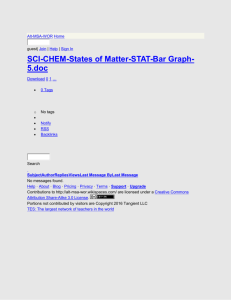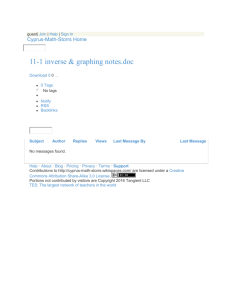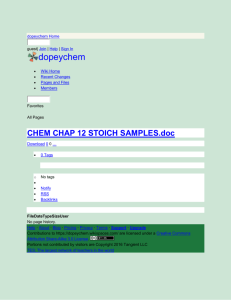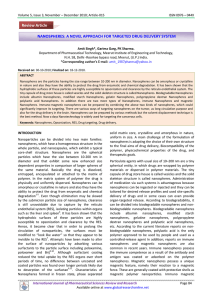Supplementary Information
advertisement
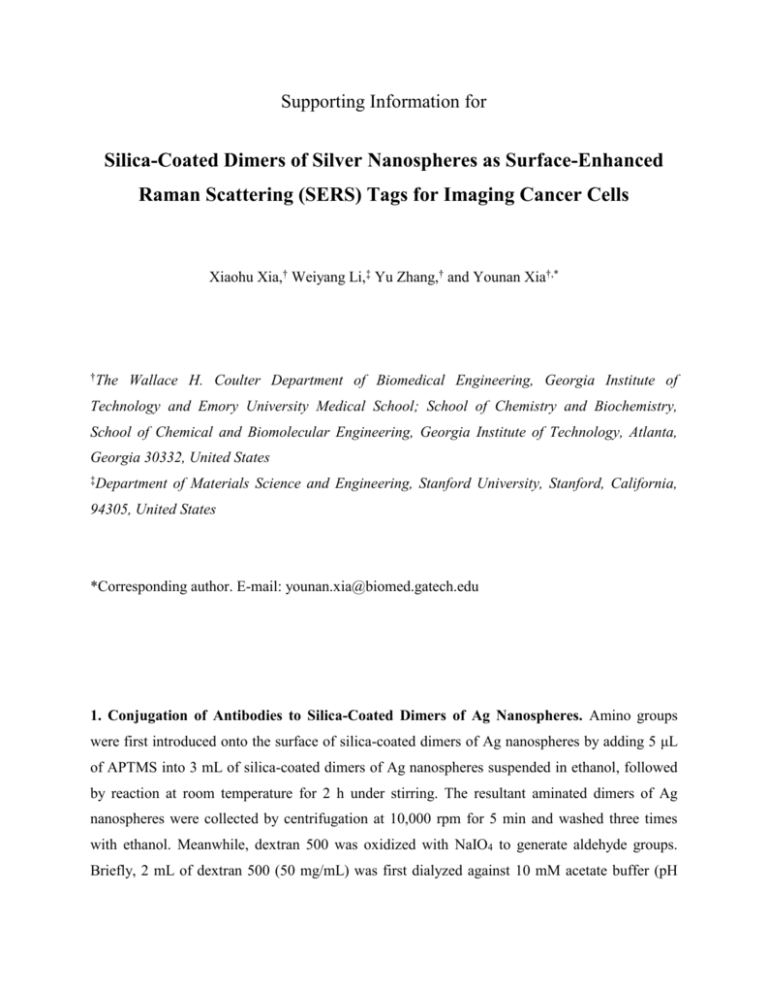
Supporting Information for Silica-Coated Dimers of Silver Nanospheres as Surface-Enhanced Raman Scattering (SERS) Tags for Imaging Cancer Cells Xiaohu Xia,† Weiyang Li,‡ Yu Zhang,† and Younan Xia†,* †The Wallace H. Coulter Department of Biomedical Engineering, Georgia Institute of Technology and Emory University Medical School; School of Chemistry and Biochemistry, School of Chemical and Biomolecular Engineering, Georgia Institute of Technology, Atlanta, Georgia 30332, United States ‡Department of Materials Science and Engineering, Stanford University, Stanford, California, 94305, United States *Corresponding author. E-mail: younan.xia@biomed.gatech.edu 1. Conjugation of Antibodies to Silica-Coated Dimers of Ag Nanospheres. Amino groups were first introduced onto the surface of silica-coated dimers of Ag nanospheres by adding 5 μL of APTMS into 3 mL of silica-coated dimers of Ag nanospheres suspended in ethanol, followed by reaction at room temperature for 2 h under stirring. The resultant aminated dimers of Ag nanospheres were collected by centrifugation at 10,000 rpm for 5 min and washed three times with ethanol. Meanwhile, dextran 500 was oxidized with NaIO4 to generate aldehyde groups. Briefly, 2 mL of dextran 500 (50 mg/mL) was first dialyzed against 10 mM acetate buffer (pH 5.2) at 4 °C and then mixed with 100 μL of 0.3 M NaIO4. After incubation for 30 min at room temperature, the unreacted reagents were removed by dialysis against DI water. Anti-HER2 antibodies were covalently linked to the silica shell through the oxidized dextran 500. For this purpose, 0.2 mL of the aqueous solution of oxidized dextran 500 (50 mg/mL) was added into the aminated dimers of Ag nanospheres in 10 mM carbonated buffer (pH 9.5) and reacted at 4 °C for 6 h under stirring. The as-obtained dextran 500-bridged, silica-coated dimers of Ag nanospheres were washed twice with the carbonated buffer to remove excess oxidized dextran 500. AntiHER2 antibodies (0.1 mL, 5 mg/mL) were dialyzed against the carbonate buffer and added to the dextran 500-bridged, silica-coated dimers of Ag nanospheres. The mixture was allowed to react at 4 °C for 6 h, and then NaBH3CN was added at a final concentration of 5 mM, followed by incubation at 4 °C overnight. The antibody-linked dimers of Ag nanospheres (i.e., dimer tags) were then blocked by adding an equal volume of blocking solution (10 mM Tris-HCl buffer containing 2% BSA, 4% sucrose, and 1% glycine, pH7.8). The as-obtained dimer tags were rinsed twice with 10 mM Tris-HCl buffer (pH 7.8) and finally suspended in 100 μL Tris-HCl buffer and stored at 4 °C before use. 2. Immunofluorescence Assay for Determination of HER2: SK-BR-3 and U-87 cells were seeded in the wells of a 24-well plate at a density of 1.0×104 cells/well, and left to attach overnight. The cells were then fixed with 4% formaldehyde for 10 min, and washed for 3 times with phosphate buffered saline (PBS, Invitrogen). The cells were then blocked with a PBS solution containing 1.5% bovine serum albumin (BSA, Sigma) for 1 h, followed by incubation with primary antibody (mouse anti-HER2, 1:200) in the above-mentioned blocking solution overnight at 4 °C. After 3 washes with PBS, FITC-conjugated secondary antibody (goat antimouse IgG, Invitrogen, 1:200) was applied for 1 h at room temperature, followed by PBS washing. Cell nuclei were labeled with 4',6-diamidino-2-phenylindole (DAPI, Invitrogen). The fluorescence micrographs were taken using a QICAM Fast Cooled Mono 12-bit camera (Q Imaging, Burnaby) attached to an Olympus microscope with Capture 2.90.1 (Olympus), and were then converted into corresponding color images in Photoshop (Adobe). 2 Figure S1. TEM images of (a) dimer of Ag nanospheres, (b) Ag nanospheres, and (c) Ag nanocubes. The insets show TEM images of individual Ag particles at a higher magnification. Scale bars in the insets of (a-c) are 20 nm. (d) UV-vis extinction spectra of the Ag particles shown in (a-c). 3 Figure S2. TEM image of the dimer tags at a lower magnification relative to the image shown in figure 2a. 4 Figure S3. TEM images of silica-coated Ag nanospheres where the thicknesses of silica coatings were: (a) 0 nm, (b) 5 nm, (c) 10 nm, (d) 20 nm, and (e) 45 nm, respectively. (f) UV-vis extinction spectra of the samples shown in (a-e). 5 Figure S4. TEM images of the silica-coated Ag nanocubes: (a) with and (b) without the addition of PVP during the standard coating process. The insets of (a) and (b) show TEM images of individual silica-coated Ag nanocubes at a higher magnification. Scale bars in the insets are 20 nm. 6 Figure S5. SERS spectra recorded from aqueous suspension of 1,4-BDT functionalized dimer tags (particle concentration ≈ 100 pM). The 1,4-BDT functionalized dimer tags was prepared by using the same procedure for the 4-MBA functionalized dimer tags except for the use of the same amount of 1,4-BDT as the Raman reporter molecule. Band assignments for 1,4-BDT are labeled above the peaks. 7 Figure S6. SERS spectra recorded from aqueous suspension of the dimer tags under nearinfrared laser excitation (particle concentration ≈ 100 pM). The SERS spectra were recorded with λex = 785 nm, Plaser = 10 mW, and t = 30 s. 8 Figure S7. Immunofluorescence images of (a) SK-BR-3 cells and (b) U-87 cells as measured by fluorescence microscopy. In both cases, the cells were incubated with mouse anti-HER2 antibodies, followed by incubation with fluorescein isothiocyanate (FITC)-conjugated secondary antibodies. Cell nuclei were labeled with 4',6-diamidino-2-phenylindole (DAPI). The green and blue colors in (a) and (b) represent fluorescence from FITC and DAPI, respectively. 9 Figure S8. SERS mapping of U-87 cells by detecting HER2 with: (a) dimer tags, (b) sphere tags, and (c) cube tags. In each column, row (i) shows bright-field images of an individual cell, and row (ii) shows the corresponding SERS mapping image based on the intensity of the 4-MBA band at 1,588 cm-1. The sizes of each image in (i) and (ii) are 24 μm × 24 μm. iii) Typical SERS spectra of the SERS mapping image, corresponding to the spots marked with the same numbers in (ii). 10

